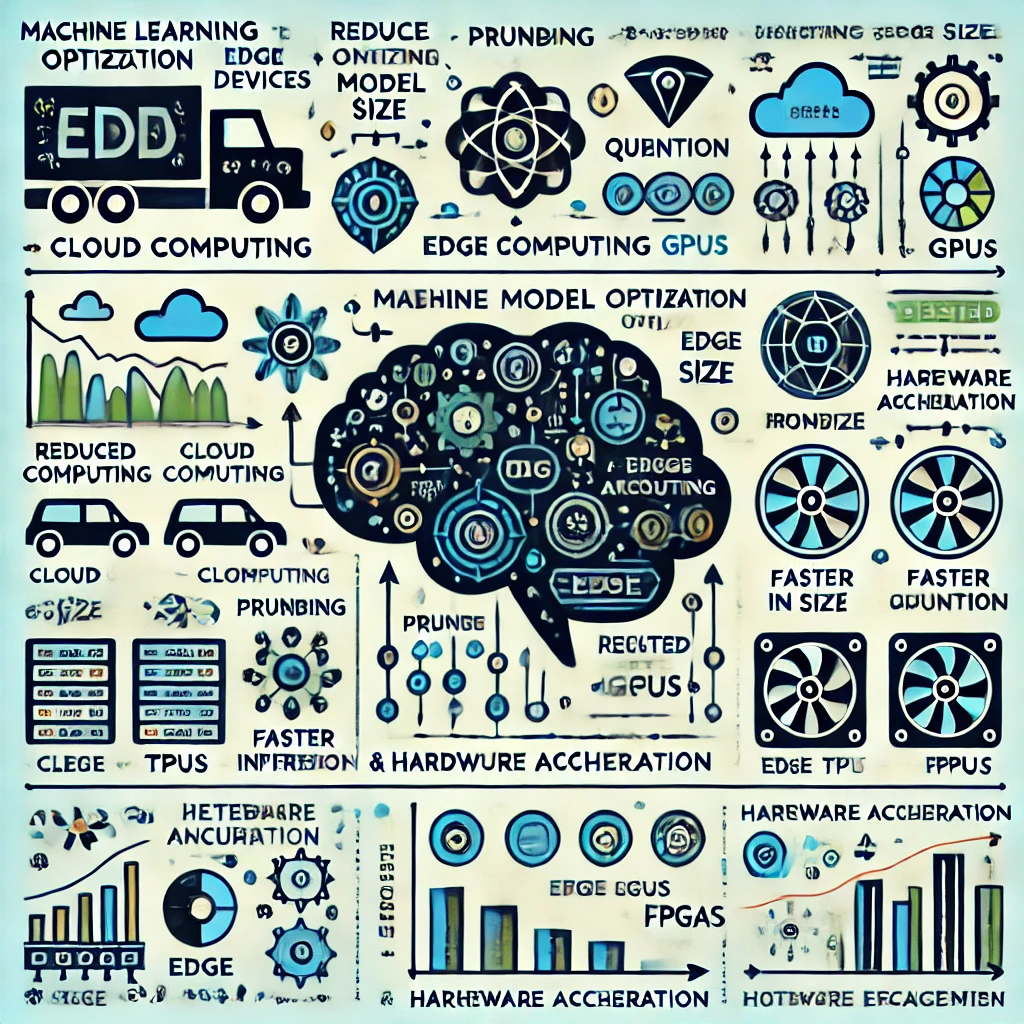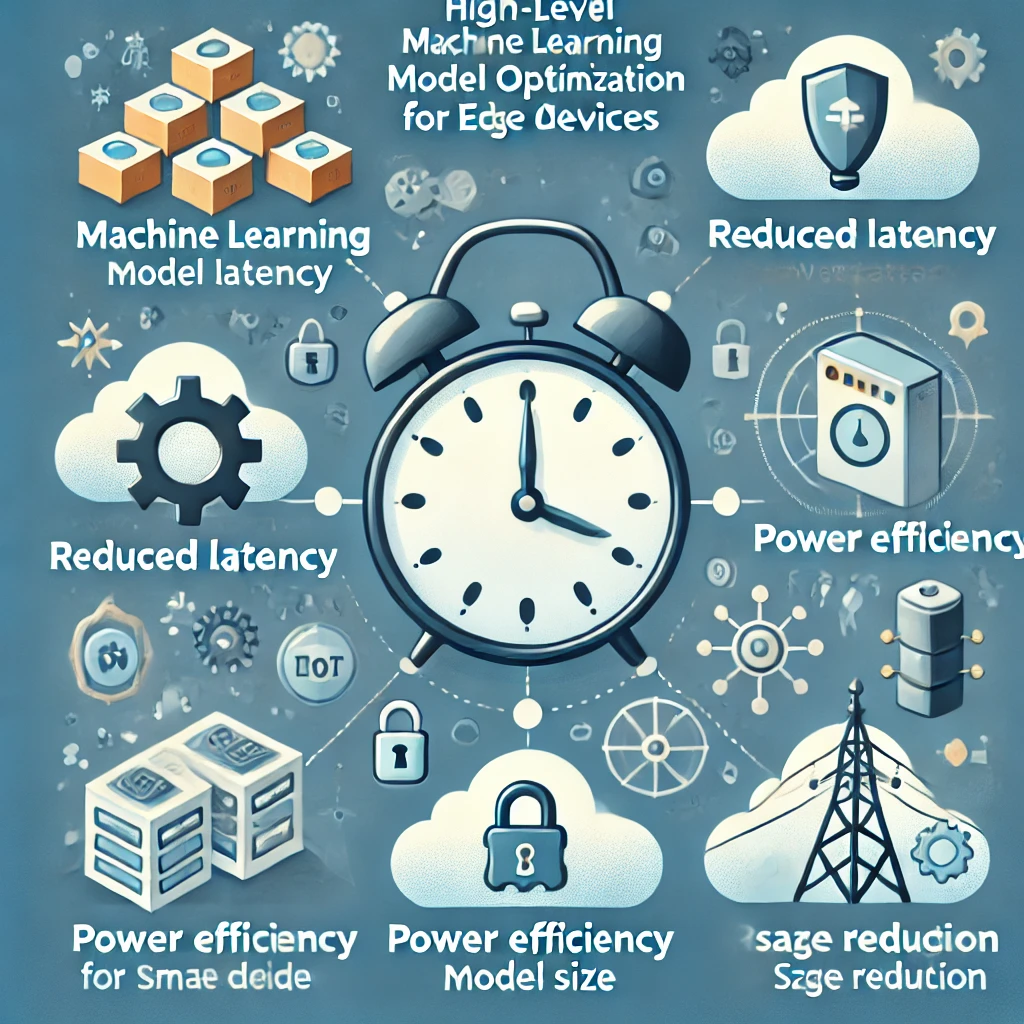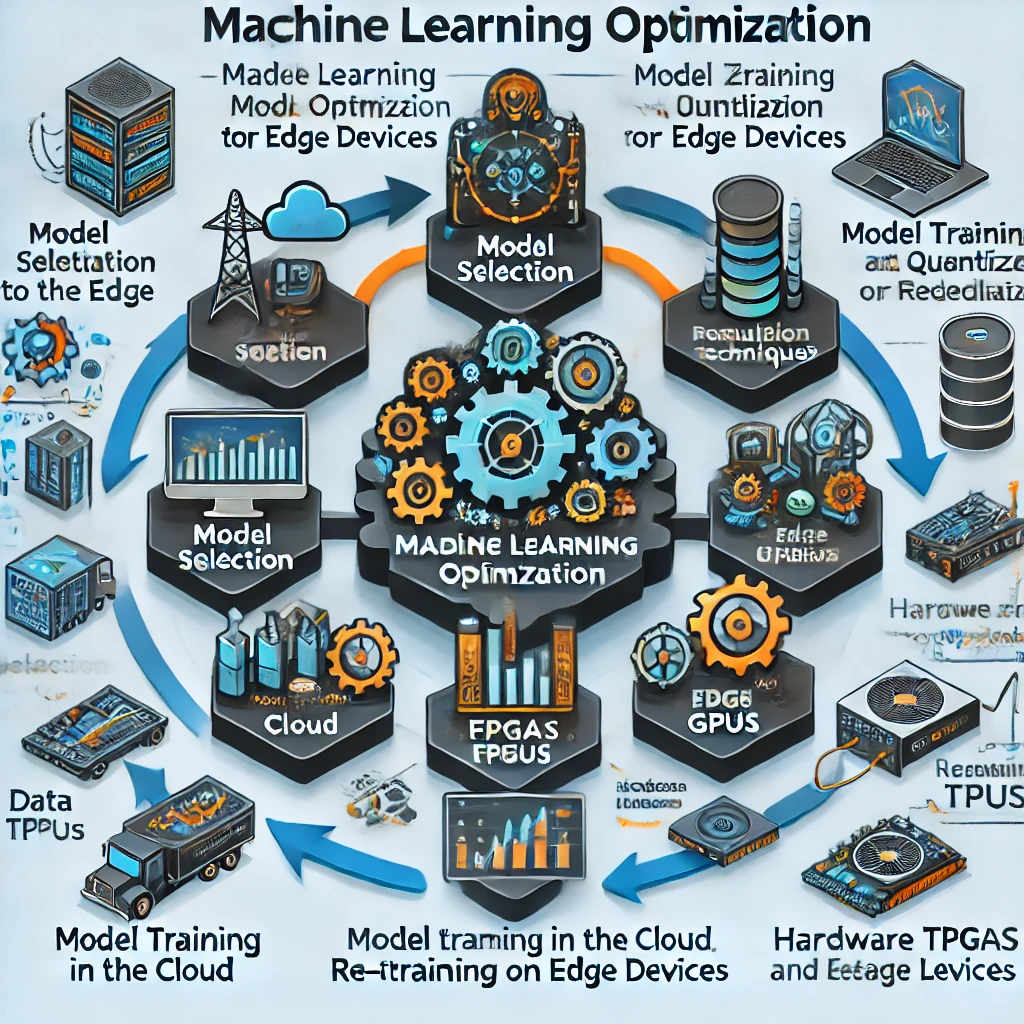Optimizing Machine Learning Models for Edge Devices: A comprehensive Deep Dive 2024

In the era of IoT and edge computing, machine learning (ML) models are increasingly being deployed on edge devices to provide faster, real-time decision-making. The benefits of deploying AI at the edge are immense, from improving response times to ensuring privacy and reducing dependency on centralized clouds. However, deploying models on edge devices comes with its own set of challenges due to hardware limitations, such as restricted storage, memory, and processing power.
In this blog, we’ll explore various techniques to optimize ML models for edge devices, ensuring they perform efficiently while maintaining high accuracy.
1. Why Model Optimization for Edge Devices is Crucial

The demand for real-time analytics in applications such as smart homes, factories, healthcare, and logistics requires immediate responses. Centralized cloud computing can’t meet the stringent speed and scale requirements, which is where edge computing comes in. Edge devices, like smart sensors and mobile phones, can process data locally, reducing latency and improving user experience.
However, these devices have limitations in terms of processing power, storage, and battery life. To tackle these challenges, ML models must be optimized to run efficiently on these constrained devices.
2. Key Challenges in Edge ML

- Limited Compute Power: Edge devices often have less computational power than the cloud, which makes running complex models challenging.
- Memory and Storage Constraints: Limited storage and memory on edge devices require careful management of model size and complexity.
- Low Latency: Real-time predictions demand low latency, meaning models need to be compact and fast.
- Energy Consumption: Running ML models on edge devices must be energy-efficient to avoid draining device batteries.
3. Techniques for ML Model Optimization

To ensure that ML models work efficiently on edge devices, several techniques are employed. Let’s dive into these optimization methods:
Pruning
Pruning involves removing unnecessary or redundant nodes from the neural network during training. This reduces the network’s size and computational complexity without significantly affecting performance. By identifying nodes that contribute little to the model’s output, we can “prune” them, leading to faster inference.
Example: Removing nodes with weights close to zero, which can be identified in the weight matrix after training, is a common technique for pruning.
Dimensionality Reduction
High-dimensional data can overwhelm edge devices, requiring dimensionality reduction techniques such as Principal Component Analysis (PCA) and Recursive Feature Elimination (RFE). These methods help reduce the size of the data being processed, making it easier for models to run efficiently on edge devices.
Quantization
Quantization reduces the number of bits used for model weights and activations. By using lower precision (e.g., 8-bit integers instead of 32-bit floats), models can be made smaller and faster without sacrificing much accuracy. This method is particularly beneficial for improving the inference speed and reducing the memory footprint of models.
Types of Quantization:
- Post-training Quantization: Reduces model size after training.
- Quantization-Aware Training (QAT): Incorporates quantization during training, offering better performance compared to post-training quantization.
Regularization
Regularization techniques like L1 and L2 regularization help prevent overfitting, which is a common issue when training complex models. Regularization involves adding a penalty term to the loss function, discouraging the model from relying too heavily on any individual feature, thereby simplifying the model.
Hyperparameter Tuning
Tuning the hyperparameters, such as the number of layers, neurons, and dropout rates, can drastically improve the model’s performance on edge devices. This allows for the creation of more efficient models tailored to the specific hardware capabilities of the edge device.
4. Benefits of Model Optimization for Edge Devices
- Resource Efficiency: Optimized models require fewer resources, making them suitable for low-powered devices like smartphones and IoT devices.
- Reduced Latency: With models running locally, there’s no need for round trips to the cloud, ensuring real-time predictions.
- Privacy and Security: Data doesn’t need to leave the device, providing enhanced privacy and reducing security risks.
- Power Efficiency: Optimized models consume less energy, prolonging battery life on mobile and IoT devices.
5. Hardware Acceleration for Edge ML
Specialized hardware, such as Google’s Edge TPU, FPGAs, and GPUs, can speed up the execution of ML models on edge devices. These hardware accelerators are purpose-built to handle machine learning workloads efficiently, ensuring high performance while keeping power consumption low.
6. Frameworks for Edge ML Optimization
TensorFlow Lite (TFLite) is one of the most widely used frameworks for deploying optimized models on edge devices. TFLite supports various optimization techniques like quantization, pruning, and clustering. TensorFlow’s Model Optimization Toolkit provides tools to fine-tune models for performance and efficiency, offering support for both pre- and post-training optimization.
7. Conclusion
Optimizing machine learning models for edge devices is essential for enabling real-time, efficient, and privacy-preserving AI applications. By employing techniques such as pruning, quantization, and dimensionality reduction, we can significantly improve model performance and make them suitable for deployment on constrained devices. With the advent of specialized hardware accelerators and frameworks like TensorFlow Lite, edge ML is poised to play a crucial role in the future of intelligent systems.
This blog gives an overview of various techniques and practices that can be used to optimize machine learning models specifically for edge devices. Let me know if you want any more detailed explanations or specific examples included!